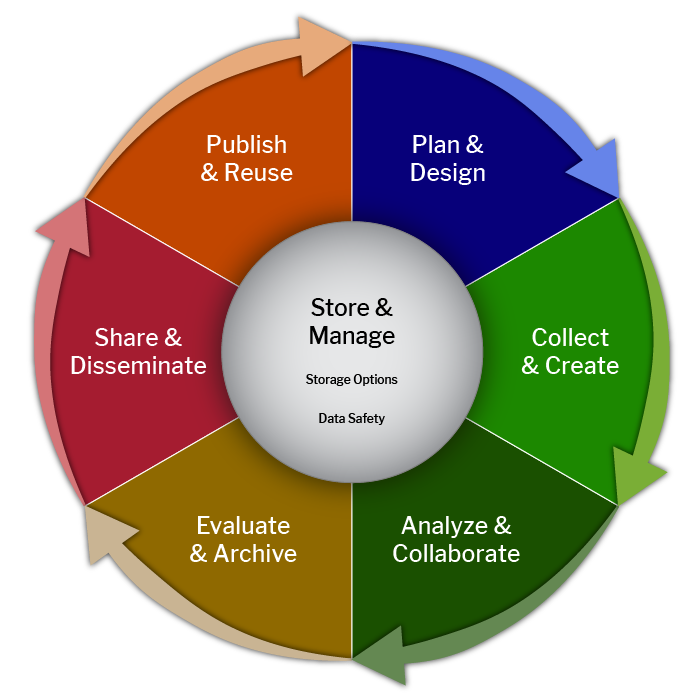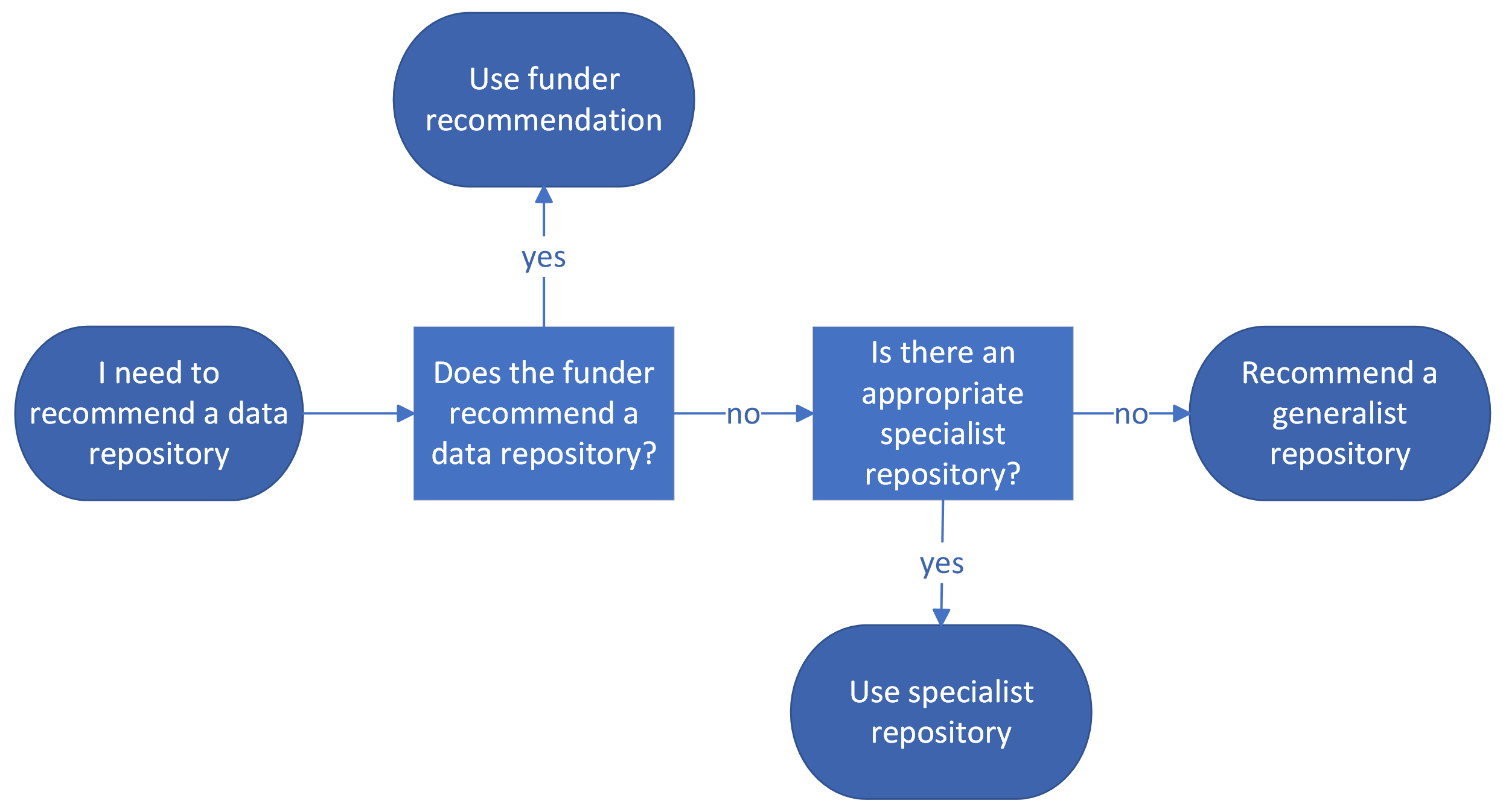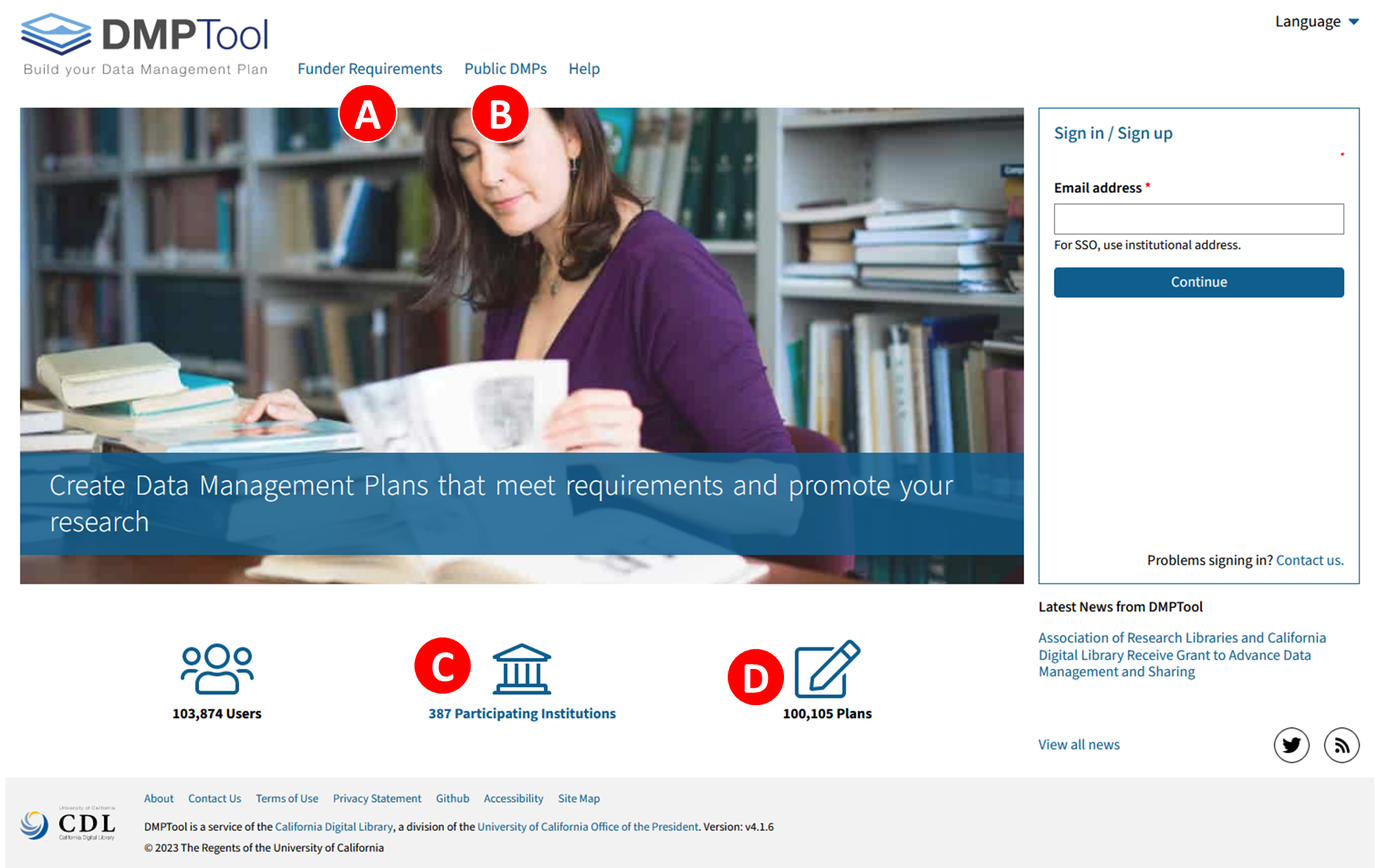Data Management Plan (DMP) Overview
Figure 1

DMP Resources
Figure 1
The funding announcement. Most grant programs
create an announcement, which may be called by any of a number of
acronyms such as a “CFP” (call for proposals) or “NOFO” (Notice of
funding opportunity) to publicize their funding opportunity. After
navigating to the funding announcement, you can scan through the
associated links to look for information on their data management plan
requirements. Below, you can see the information provided in a National
Institutes of Health Notice of Funding Opportunity:
In case the funding announcement does not have the information you need,
proceed to the other items on this list.
Figure 2
Funder application instructions or website.
Large funders will have a website set up to help researchers through the
application process. Looking through the documentation can help you
understand their requirements for data management plans. This example
from the NIH application instructions redirects you to sharing.nih.gov, their website
specifically for data sharing:
Figure 3

Supporting Researchers
DMPTool and Common DMP Issues
Figure 1
Q1. Example data management plans are available without logging in to
the DMPTool. Which option should I click on to find example data
management plans? 
Figure 2
Q2. For participating institutions, it is possible to find plans
developed by researchers at your institution. After logging in to
DMPTool, where would you click to find these plans: 
